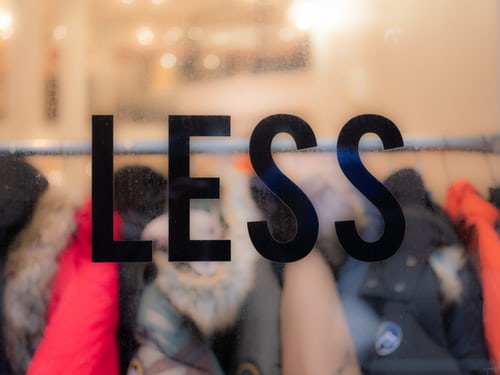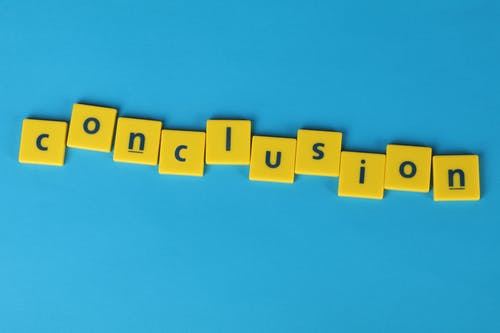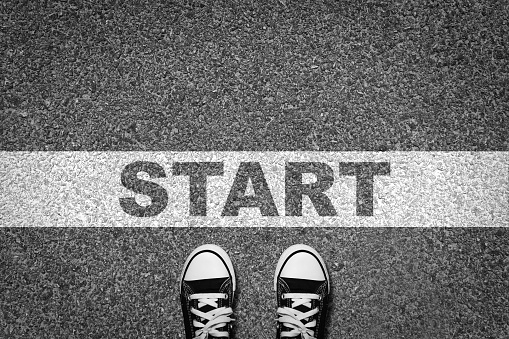Having been a transcriber for over 6 years (yeah, that long). I get a lot of questions, from family, friends, friends of friends, about what I do followed by requests to teach what I do. Sadly, sometimes I don’t have the time to completely break down what it is I do – Too busy transcribing (and exercising) and Netflixing lol! JK. All these questions inspired me to write this blog on transcription. But, keep in mind that this blog doesn’t fully cover the vast areas of transcription, each transcription company or individual has their own way of transcribing, this is just a tip of the ice berg on how I approach transcription.
Before we get started, I’d like share with you a few general truisms of transcription I’ve learned through my years as a transcriber. Transcription is not for everyone – It’s not easy. It requires that you are detailed oriented and not easily distracted. You’ll need to concentrate on what you are doing. You’ll also need to have a very good command of the language that you are transcribing in be it Swahili, Spanish, German, English, French, Russian, Kikuyu etc. You also have to be willing to learn as you go along. Google and the thesaurus will be your best friend.
All this might seem daunting, but there are a lot of benefits to transcribing. It can be a fulfilling career choice. You also get to choose your own working hours and it’s relatively a well-paying gig. But we are getting ahead of ourselves. My point is, like everything else in life, if you put in the work, you’ll be successful.
With that out of the way, let’s get started.
What is Transcription?

Basically, transcription is a synonym for ‘writing out’ or ‘typing out’. It involves listening to a prerecorded audio or video and typing the contents up into a document, which is then returned to the “client”, as a accurately written record of what’s on the recording. Typically, this will be an interview – which might be data a journalist (client) has accumulated with someone they’re writing about or interested in, or part of a study, where a researcher has interviewed subjects and needs to record their responses. It can take ages to type out a recording like this – much longer than you think it will, particularly if you don’t type very fast!
Five important terms to remember in this job.
Transcription.
Transcribing.
Transcriber
Transcript.
Client
These are terms you will come across quite often which might seem obvious but to some not very much. Here is a very simple definition of each of them. Please try and keep up.
TRANSCRIPTION is the name given to this kind of work and TRANSCRIBING is the act of doing this kind of work. A TRANSCRIBER is the person who does the job and a TRANSCRIPT is the final product of transcription.
EG. A transcriber is transcribing a transcript for a transcription company
And finally, a CLIENT is the individual or researcher or company who hires a transcriber to do the transcribing. It is your job to ensure that your transcription services meet the client’s requirements.
Now, you don’t need to memorize all this, it becomes apparent as you continue to learn more and more about transcription.
Essentials to Becoming a Transcriber

As with other careers, you’ll need training before you can call yourself/be regarded as a transcriber. You’ll need to have transcribed at least 60 hours of audio before you qualify as a transcriber. In the beginning, that might seem like a lot of work. But bear in mind that any good transcriber becomes one only with practice. So how do you get there?
Touch Typing

Being a touch typist is all about typing without peeking at your keyboard for every key. A very important skill for transcribing. I can tell you horrid stories of wannabe transcribers who don’t know how to touch type and take a whole day to transcribe a 10-minute file! Believe me, you don’t want to be in that boat.
There are a couple of programs online that can help you up your typing speed. one of my favorites is Typing Master. Now Typing Master 10 is a touch-typing course that adapts to your unique needs. It provides over 10 hours of customized exercises to guide you step by step to professional keyboarding. You can take the free 1-week typing course period to try before buy.
Tools

In this area there are the essentials, and optional items.
Essentials
Complete desktop (mouse, keyboard, screen, UPS system) or a laptop.
USB headset (Regular headset)
Transcription software
Time tracking software or a wall clock or a watch.
Good reliable internet connection.
Source of power.
Regular dictionary or thesaurus (online or offline)
Grammar and spelling checker
File converter.
Optional Items

Work station. A comfortable working station will greatly improve your productivity. Get a desk and a comfortable desk chair. (Some people work on their sofas or in bed or even a cyber hence the optional tag on this)
A quiet place to work.
Good supply of snacks (gum, sweets or a cup of tea)
Forms of Transcription
There are many final forms a transcribed document can take. The client will give instructions on how they would like their transcript to be. Here we shall just take a look at two forms of transcription, verbatim and non-verbatim.
Verbatim. (V)

A true verbatim transcript captures EVERYTHING on the recording – including words, sounds, and non-verbal communication such as laughter, pauses, etc.
Verbatim transcription requires a keen ear and attention to detail. Verbatim transcripts cannot be created by mindlessly listening and typing. One has to pay close attention to every sound, tone, word and make intelligent use of punctuation to convey the correct message. This type of transcription is the most difficult, complicated and time-consuming. It is also the most expensive type of transcription because it involves ensuring that each spoken word, every laugh, every emotion, background noise, mumbled or garbled sentences or words is transcribed and time-coded in the written format. In short, the written format of a verbatim transcription must be an exact replica of the audio or video file as recorded.
Here are 4 important rules of verbatim transcription:
- Capture EVERY word (don’t paraphrase)
Many transcriptionists have the habit of paraphrasing statements to convey the general idea of what is being said rather than typing out the exact words. This process called clean read transcription, is much preferred in business transcription because of the easy-to-read transcripts it produces. But it’s not very popular amongst researchers and analysts who need to know exactly what was said. Here are a couple of examples to illustrate the difference between the two styles –
Paraphrased sentence: “I was screaming for my mother and she was maybe 30 yards away in the house, she couldn’t have even heard me even if she was outside.”
Verbatim sentence: “And I’m screaming. You know, I’m screaming. I’m screaming for my mother. And she was uh maybe 30 yards away in the house. I mean she could have never heard me. Even if she was outside, she probably wouldn’t have heard me.”
While the meaning conveyed in both sentences is the same, the emotion is far more pronounced in the second one. Depending on what the transcript is going to be used for, this may make a world of difference. So, in verbatim transcription, it’s important to type each and every word that is said that includes all filler words such as ah, um, repeated words etc.
- Don’t leave out non-verbal communication
Communication has a lot of components other than words – such as laughter, pauses, hand gestures, etc. Verbatim transcription captures all these in order to give a true account of what’s being said.
For example,
K: What does your mother think?
N: Not much … She agrees with me yeah.
K: Really?! [Laughs] Are you sure?
N: [ laughs]
- Catch those fillers and false starts
Fillers are the ums, ahs, you knows, that are often used by speakers to buy time to think.
False starts are sentences that are started but never completed, such as:
“I would say that’s not such a … I mean that may not be … It’s best to check with an expert before proceeding in such matters.”
Fillers and false starts may break the flow of speaking but often provide insights into the thinking process of a speaker. The process of verbatim transcription therefore includes these components in the transcript rather than editing them out.
- Note external sounds
Qualitative research and even market research often requires knowing what’s happening in the surroundings while the subject or interviewee is speaking. Some examples of external sounds can be sounds of doors opening, people walking in, a side conversation between fellow participants, etc. These sounds/events should be duly noted on the transcript in brackets and with time stamps if required or as the client requires.
The main idea of verbatim transcription is to capture both the ‘what’ and ‘how’ of speech. Not everyone requires the same level of detail – for example, someone may need the non-verbal communication transcribed but may not want any external sounds/events noted on the transcript. It’s always a good idea to thoroughly discuss the specific requirements with your client before beginning a transcription project so that you know exactly what to transcribe and what to leave out.
Intelligent Verbatim (IV) or Non-Verbatim

This style of transcription involves creating a clean, print-ready transcript that has been edited in detail to correct grammatical errors, improve sentence structure (paraphrasing) and remove distractions like:
Fillers (um, uh, you know, etc.).
False starts (incomplete sentences).
Repetitions (repeated words and sentences).
Here’s an example of Intelligent Verbatim Transcription:
Interviewer: Did you ever correspond with him at the time?
Interviewee: No, I don’t recall that. I think I have some letters from him in my file though, which came some years later.
What you basically get with this style is an error-free transcript that is true to the recording, yet easy to read.
These are the two main transcription styles that are applied when transcribing. The client will be very clear about which style is required for the job that the client has given. They will at times just denote it as V or IV.
Conclusion

Many people view speech recognition technology as the future of transcription. Plenty of companies in the general transcribing business will allow their staff to work from home. Transcribing is also a job that is flexible and doesn’t require too much phone work – a situation that a lot of people want and need. So, start today if you feel that this is an area you can grow in. Have a look at my blog on 5 Benefits of being a Transcriber and do your research and find out more about the transcription world. I have a feeling you won’t regret it.
I do hope it was helpful. Please contact us for any of your transcription needs. And remember always be kind try to stay positive and learn to unwind.

4 responses to “Transcription For Beginners”
Fantastic review on this topic. I might just give it a go
Thank you Joan. Please do give it a go. Wishing you the best.
Interesting and sounds more evocative..
Thank you.